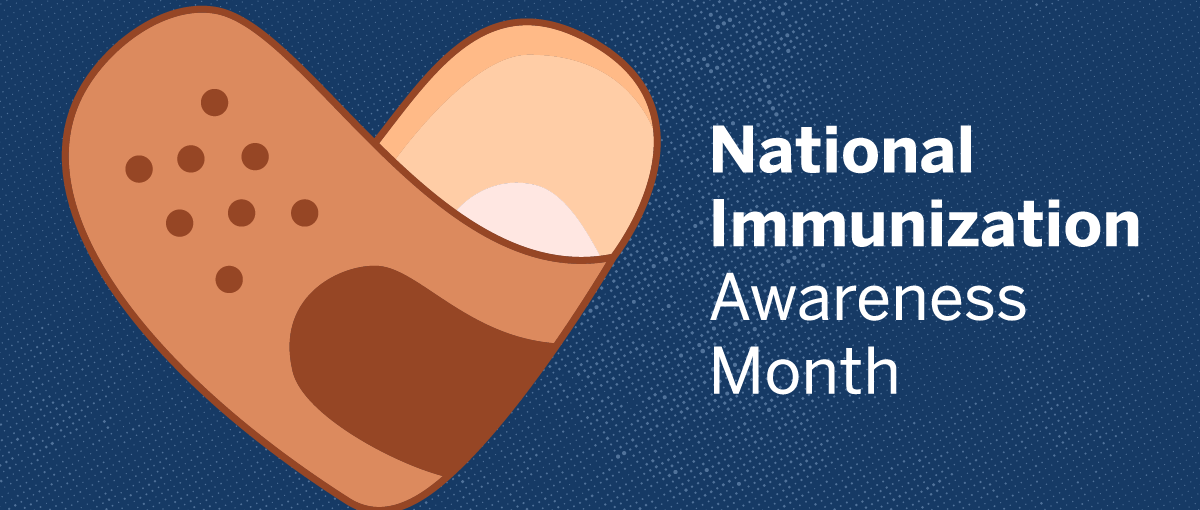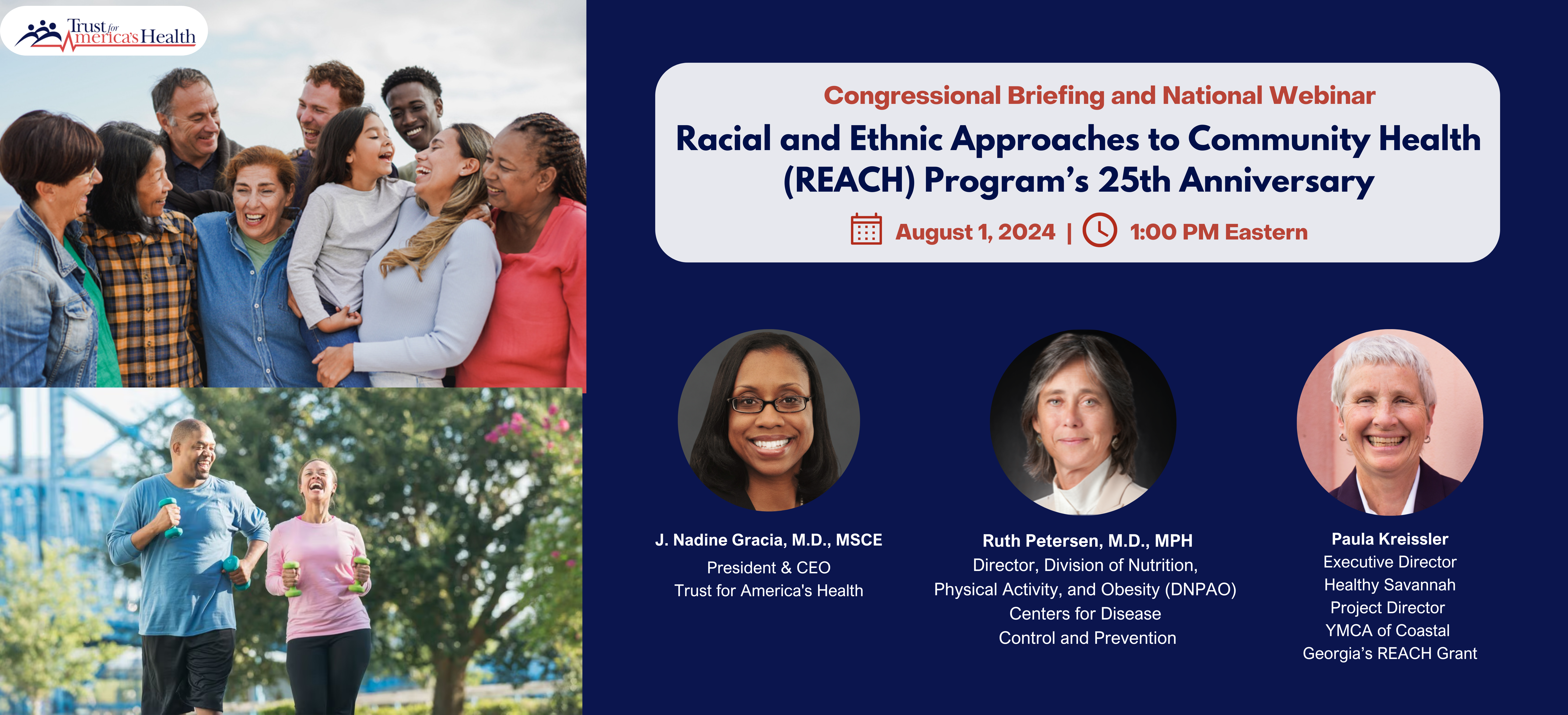New Report Provides the Next Administration and Congress a Policy Roadmap for Improving the Nation’s Health, Economy, and National Security
(October 8, 2024 – Washington, DC) – The public health system—responsible for protecting and promoting health in every community— needs sustained investment, policy support, and protection from political interference, according to a new report released today by Trust for America’s Health.
The report, Pathway to a Healthier America: A Blueprint for Strengthening Public Health for the Next Administration and Congress, identifies six priority areas and includes policy recommendations that, if adopted, will improve health outcomes and bolster the nation’s economic and national security.
Americans are living longer, thanks in part to public health. Public health interventions, such as improved sanitation, enhanced vaccination access and stronger infectious disease control, improved nutrition, tobacco use prevention, and addressing preventable injury, were the largest contributing factors to life expectancy increases over the last century.
However, too many Americans are still suffering from preventable health problems. Over the last few decades, increasing rates of chronic diseases and alarming levels of substance use disorder and suicides threaten the public’s health. Furthermore, weather-related emergencies are occurring more frequently, and population-level health disparities persist.
Public health is at risk on several fronts. Underfunding has weakened the public health infrastructure and its workforce. Mis- and disinformation and politicization have contributed to distrust of public health officials and guidance. Public health’s ability to protect communities is also at risk due to proposed or enacted policies that undermine the role of public health officials or access to preventive healthcare.
“This Blueprint Report provides a roadmap for the Administration and Congress taking office in January to improve the health and well-being of the nation. We know what works in public health and that when Congress and the Administration act in support of public health, the return is improved preparedness and individual and community health and safety,” said J. Nadine Gracia, M.D. MSCE, President and CEO, Trust for America’s Health. “The next Administration and Congress will have an important opportunity to enable all Americans to enjoy optimal health.”
2024 Blueprint Priority Areas and Highlighted Recommendations
This report includes recommendations across six priority areas to protect and strengthen public health, prevention, and our nation’s health security. The following are highlighted recommendations from the report. See the report for the inclusive set of recommendations.
Priority 1: Invest in Infrastructure and Workforce to Ensure Our Public Health System Can Meet the Challenges and Opportunities of the 21st Century.
- Congress should protect and increase overall funding for the Centers for Disease Control and Prevention (CDC).
- Congress should ensure continuous improvement of public health infrastructure.
- Congress should invest in public health data modernization and enact the Improving DATA in Public Health Act to better detect and contain health threats.
- Congress and HHS agencies should support efforts to bolster recruitment, retention, and resilience of the public health workforce.
Priority 2: Strengthen Prevention, Readiness, and Response to Health Security Threats.
- The White House should maintain coordination and leadership around public health emergencies and biodefense, and the White House and Congress should renew the nation’s Global Health Security Commitment.
- Congress should expand public health emergency preparedness funding for state, tribal, local, and territorial jurisdictions.
- Congress and the Administration for Strategic Preparedness and Response should strengthen the emergency readiness of the healthcare delivery system.
- Congress should enact legislation to ensure access to vaccines for uninsured and underinsured adults.
- Congress should support nationwide efforts to protect against environmental and climate-related health threats, including extreme heat.
Priority 3: Promote the Health and Well-being of Individuals, Families, and Communities Across the Lifespan.
- Congress should increase funding to CDC’s National Center for Chronic Disease Prevention and Health Promotion.
- Congress should enhance benefits in and protect access to the Supplemental Nutrition Assistance Program and should make healthy school meals for all permanent.
- Congress should create a national standard requiring employers to provide job-protected paid sick, family, and medical leave for all employees.
- Congress and HHS should address Adverse Childhood Experiences (ACEs) by passing the Preventing Adverse Childhood Experiences Act and increasing the investment in the CDC ACEs program.
- Congress should fund the nationwide implementation of CDC’s Comprehensive Suicide Prevention Program and support Substance Abuse and Mental Health Services Administration’s efforts to bolster the continuum of crisis care.
- Congress and the Administration should fund CDC’s internal capacity for healthy aging efforts and its support to build and sustain age-friendly public health systems in state, local, tribal, and territorial public health departments.
Priority 4: Advance Health Equity by Addressing Structural Discrimination.
- Federal agencies should regularly update and report progress on agency equity plans, ensuring metrics are inclusive of and extend beyond tracking disparities.
- Congress and the Administration should ensure accurate and complete data collection to report health-related information by race/ethnicity, age, sex, disability, language, sexual orientation, gender identity, and geography.
- Federal health agencies should focus funding on populations at elevated risk for chronic disease and poor health outcomes due to the impact of structural discrimination and disinvestment.
Priority 5: Address the Non-Medical Drivers of Health to Improve the Nation’s Health Outcomes.
- Congress should increase funding to $150 million for the Social Determinants of Health program at CDC and pass the Improving Social Determinants of Health Act.
- The Administration should continue to build on the Centers for Medicare & Medicaid Services’ (CMS) efforts to support Medicaid, Medicare, and Children’s Health Insurance Program coverage of patients’ health-related social needs.
- CMS and Congress should explore opportunities to expand the capacity of healthcare providers and payers to screen and refer individuals to social services.
- Congress should amend tax laws to increase economic opportunity for families by expanding access to the Child Tax Credit and Earned Income Tax Credit.
Priority 6: Enhance and Protect the Scientific Integrity, Effectiveness, and Accountability of the Agencies Charged with Protecting the Health of all Americans.
- The Administration and Congress should maintain the existing structure of federal health agencies, which have specific roles and expertise in protecting the nation’s health.
- The Administration should protect the scientific integrity of public health agencies and leaders.
- Congress and HHS should invest in and prioritize effective public health communications and reducing the spread of misinformation and disinformation.
- Lawmakers and courts should reject laws that weaken or preempt public health authorities, which could threaten basic public health protections such as outbreak detection, vaccination, and response.
Trust for America’s Health is a nonprofit, nonpartisan public health research, policy, and advocacy organization that promotes optimal health for every person and community and makes the prevention of illness and injury a national priority.





